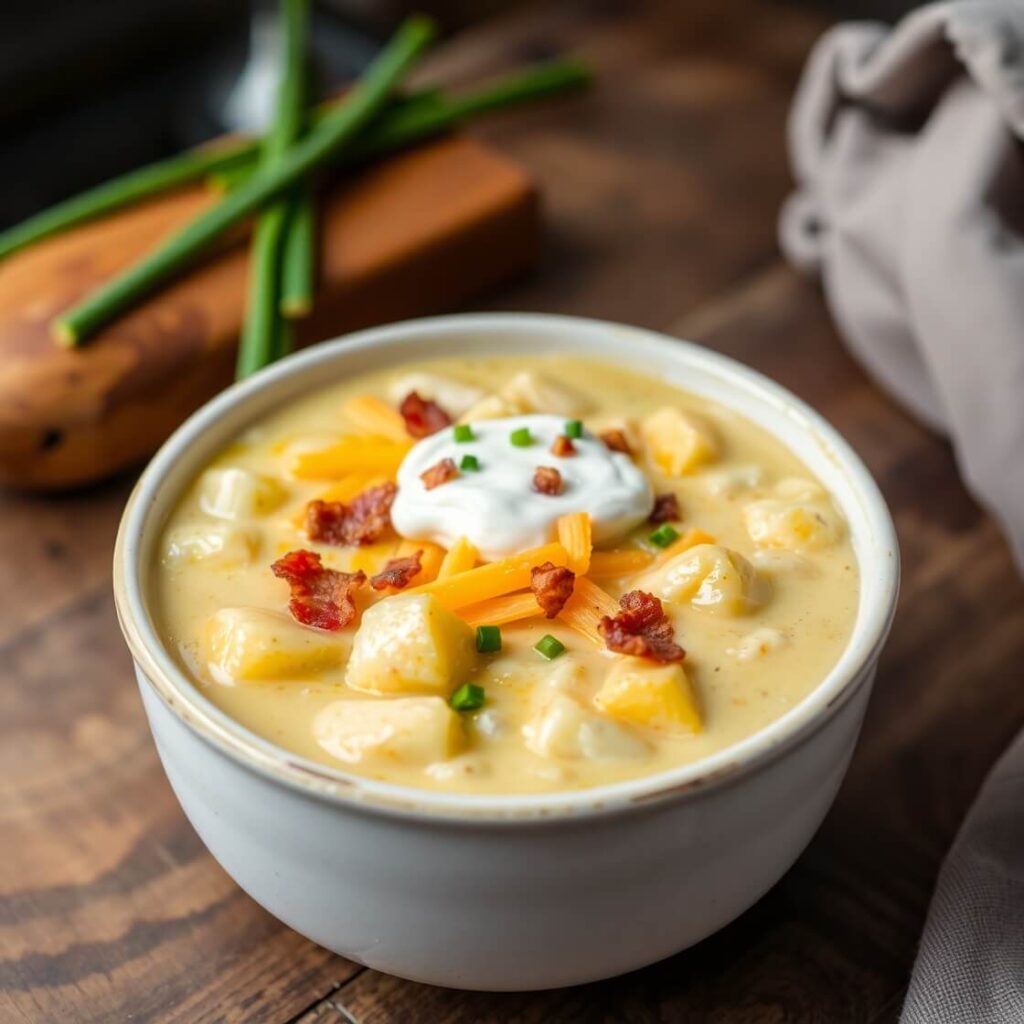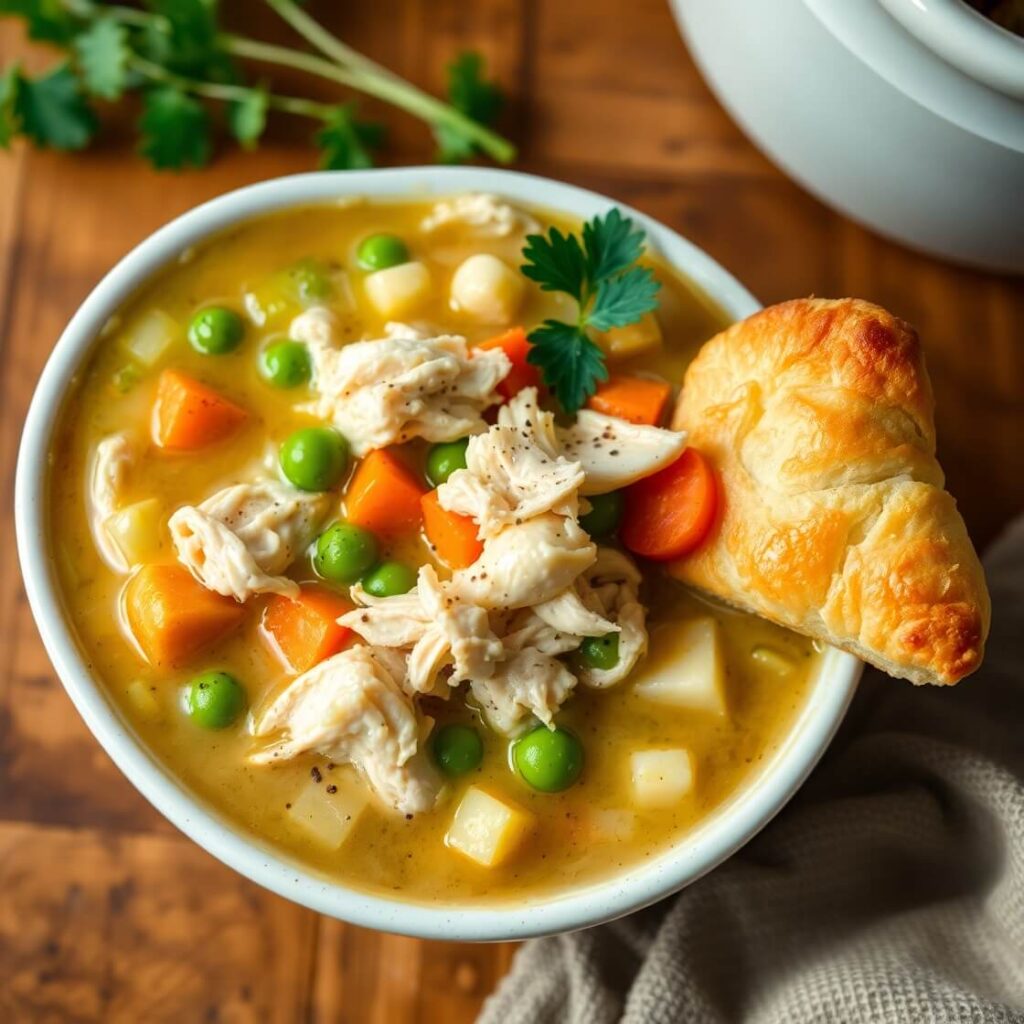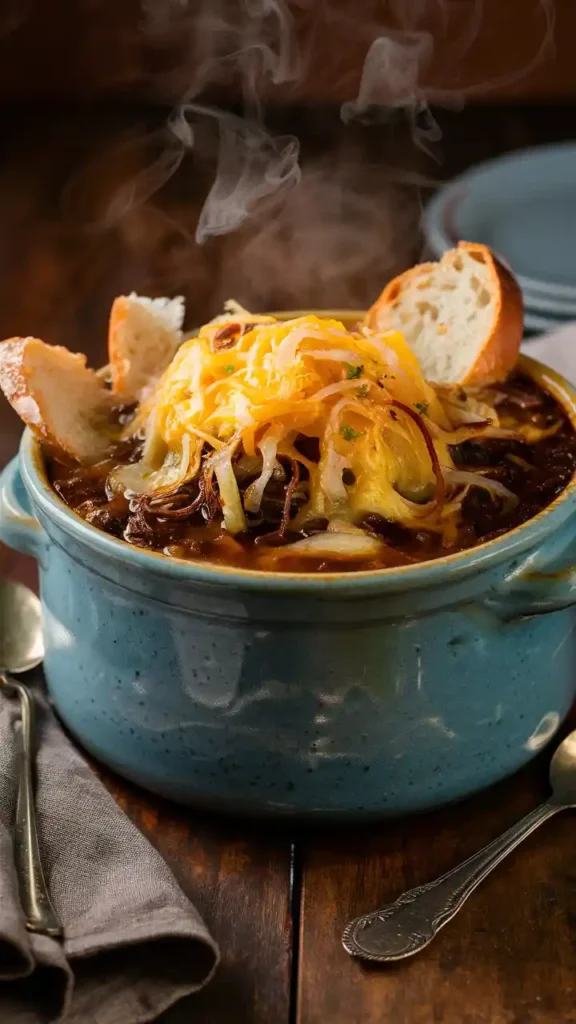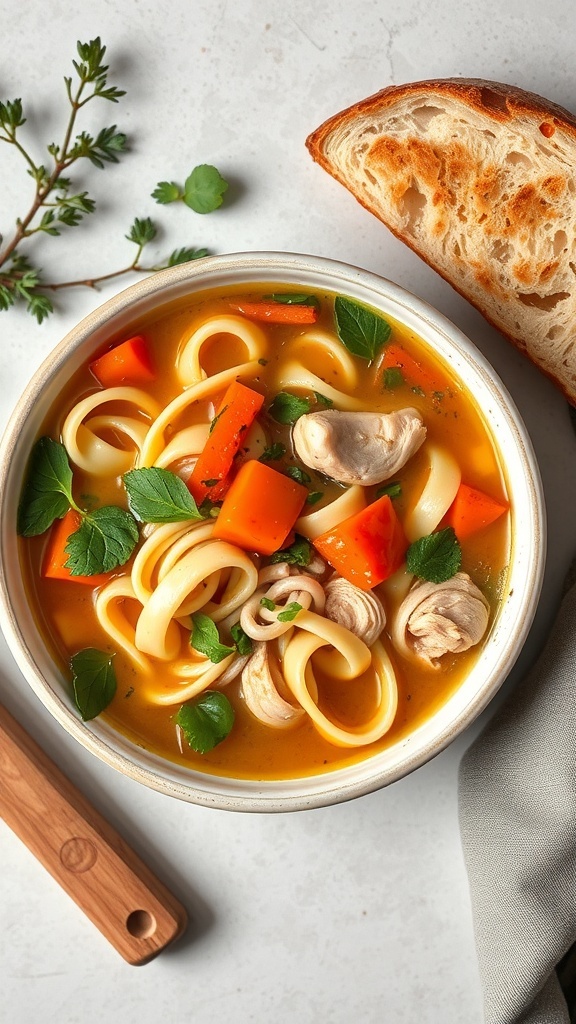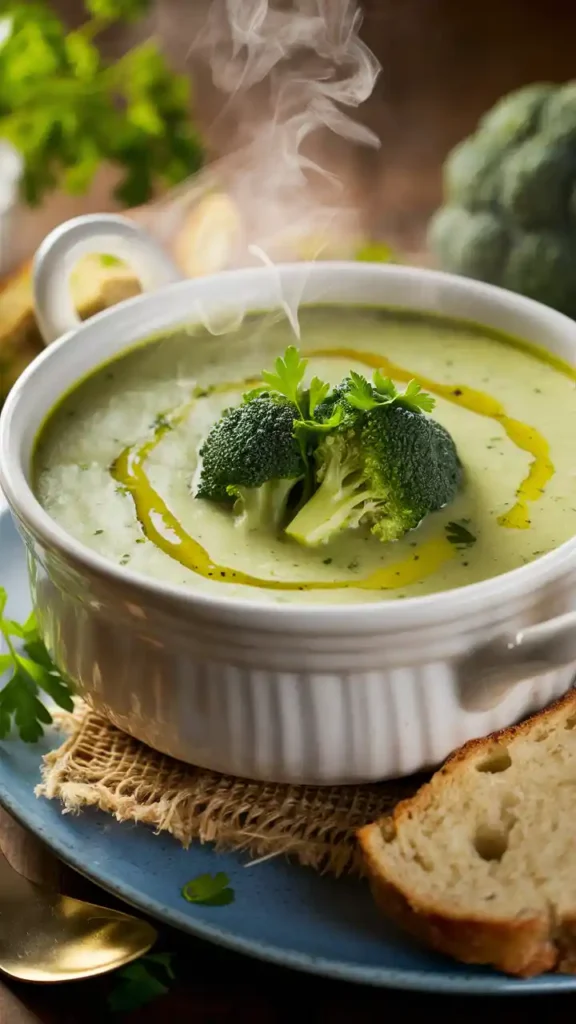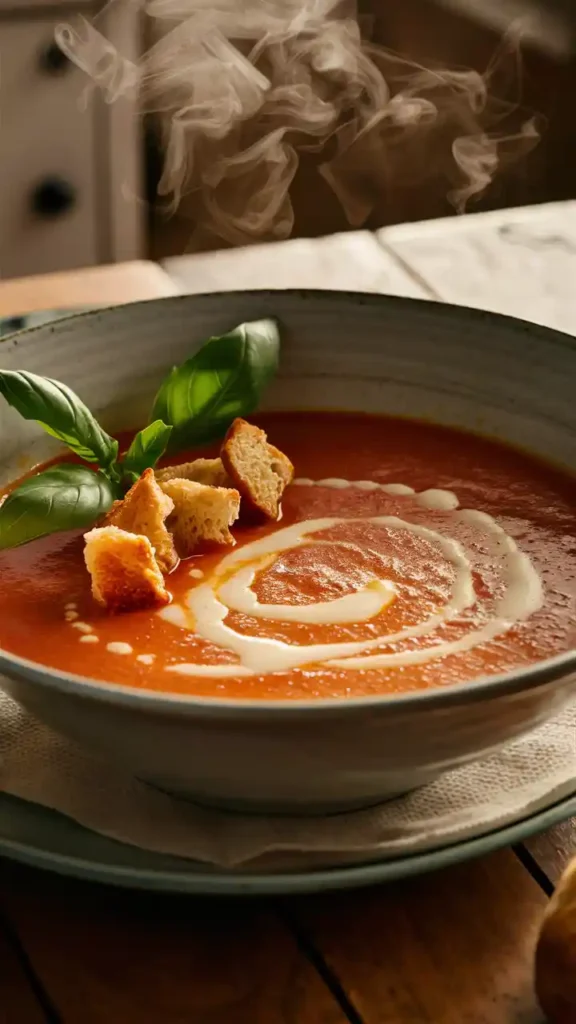Loaded Baked Potato Soup
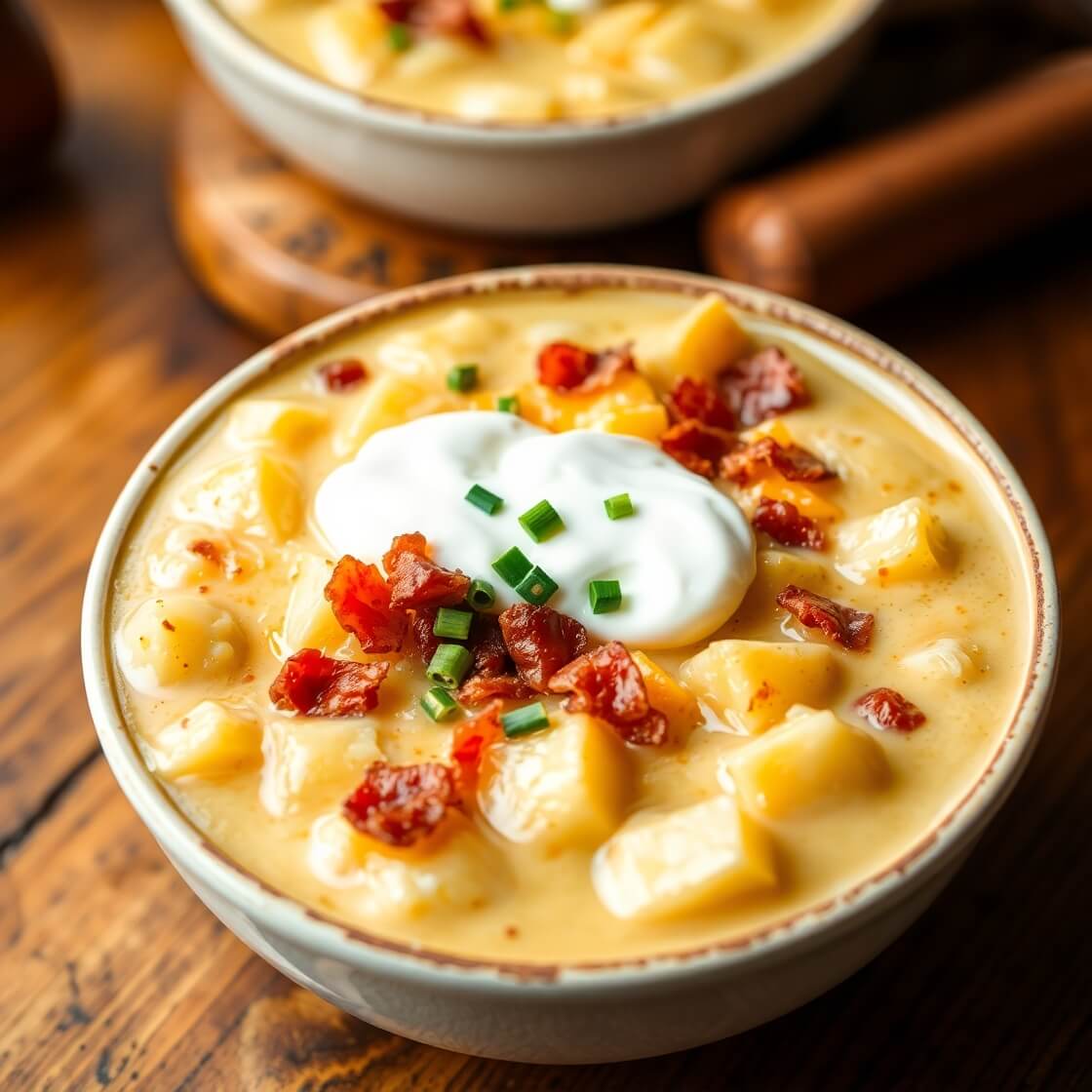
Every fall, when the first chill sets in, I find myself craving the kind of meal that feels like a hug from the inside out. For me, that meal has always been loaded baked potato soup.
The first time I made it wasn’t exactly a triumph. I rushed the potatoes, didn’t cook the bacon long enough, and thought I could whisk flour directly into the hot milk without clumping. Spoiler: I couldn’t. The result was lumpy, bland, and more of a potato stew than a soup. But here’s the funny part—my family still ate every drop. My husband said, “It tastes like you put love in it,” and that stuck with me.
Since then, I’ve refined this soup into one of my most-requested recipes. The bacon gets crisped just enough to give that smoky crunch. The potatoes are cooked until tender but not mushy. And the final swirl of sour cream and sharp cheddar turns the broth into something luxuriously velvety. It’s not just soup—it’s dinner, comfort, and memory in one steaming bowl.
Whenever I set a pot of loaded baked potato soup on the stove, the house smells like warmth itself: smoky, creamy, rich with garlic and onions. And when I bring it to the table with a loaf of crusty bread, no one asks what’s for dinner. They already know.
Gathering What You’ll Need
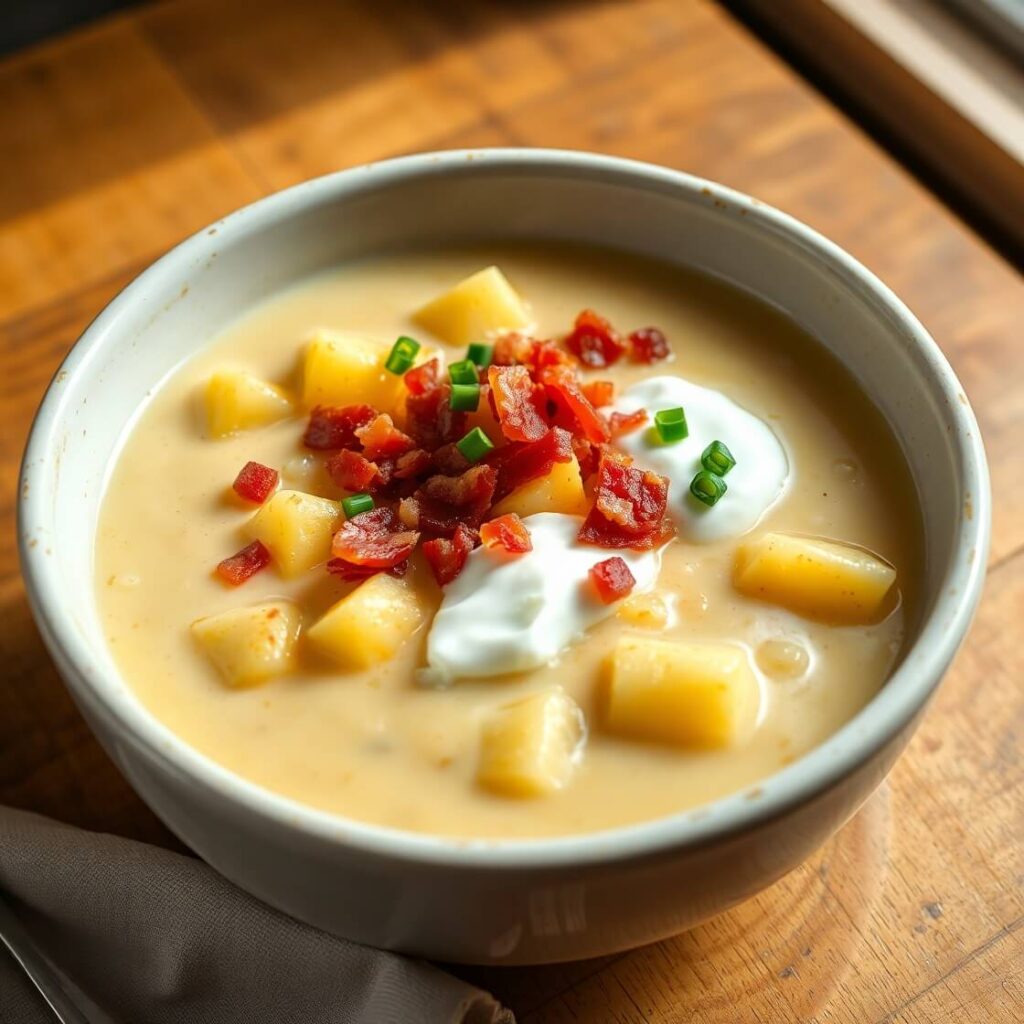
One of the best things about loaded baked potato soup is that you probably already have half the ingredients sitting in your kitchen. But each plays an important role in creating that classic balance of creamy, savory, and hearty.
Potatoes
Russet potatoes are my go-to. They break down enough to thicken the soup naturally but still hold their shape when cubed. Yukon golds work if you like a slightly creamier bite. I’ve even done a mix of both when that’s what I had.
Bacon
Don’t skimp here. Thick-cut bacon gives better texture and flavor than the thin stuff. You’ll use both the crisp pieces and some of the rendered fat to build your soup base.
Onions & Garlic
These are the quiet background singers in the recipe—subtle, but the whole soup falls flat without them. A yellow onion gives sweetness, while garlic rounds it out with a little earthy depth.
Flour & Butter
This is where the magic happens. A quick roux thickens the broth into that creamy, spoon-coating consistency. If you’ve ever wondered why some potato soups are watery while others are dreamy, it usually comes down to this step.
Milk & Broth
I like a mix of chicken broth and whole milk. The broth keeps it from being too heavy, while the milk brings the richness you expect. Some recipes use heavy cream, but I find whole milk with a finishing swirl of sour cream gives plenty of indulgence without being overwhelming.
Cheddar Cheese & Sour Cream
These are the “loaded” part of the loaded baked potato. Sharp cheddar melts best, while sour cream adds a tangy lift that balances all that richness.
Green Onions
For me, they’re not optional. The bright, peppery freshness of green onions ties everything together.
Seasonings
Salt and pepper, of course, but don’t underestimate smoked paprika or a tiny pinch of cayenne if you want a little warmth without overwhelming spice.
Cooking It Together
I always think of this soup as a recipe that comes together in layers—each step builds on the last, so nothing tastes flat.
Start with the bacon.
I cook it low and slow in my Dutch oven until the edges are deep brown and the kitchen smells like heaven. Once crisp, I move it to a paper towel-lined plate but leave about two tablespoons of the fat behind. That’s flavor you don’t want to waste.
Next comes the aromatics.
Onions go in first, sizzling as they hit the bacon fat. I cook them until translucent, then add the garlic. The moment garlic hits hot fat is always my favorite part—it’s a two-second window of fragrance that fills the entire house.
Build the base.
Butter melts in, then flour gets whisked through until it’s lightly golden. This is your roux, and you don’t want to rush it. If the flour stays too pale, the soup can taste raw.
Add the liquids.
I whisk in the chicken broth slowly, scraping the bottom to pull up all the good bits. Then the milk follows. At this point, the soup looks thin, but don’t worry—it thickens beautifully as it simmers.
Potatoes join the party.
Cubed russets go in, and the pot starts to look like a proper soup. I simmer until the potatoes are fork-tender, usually around 20 minutes. You’ll know they’re ready when the soup thickens slightly and some potatoes start to break down naturally.
The finish.
Once off the heat, I stir in sour cream and sharp cheddar until the broth turns creamy and golden. Then I crumble in most of the bacon, reserving some for garnish. A few turns of black pepper and a sprinkle of paprika later, the soup is ready to ladle into bowls.
When I bring it to the table, I set out extra toppings—more cheese, sour cream, chopped green onions, and that reserved bacon. Everyone builds their own bowl, just like dressing a baked potato.
Keeping It Fresh for Later
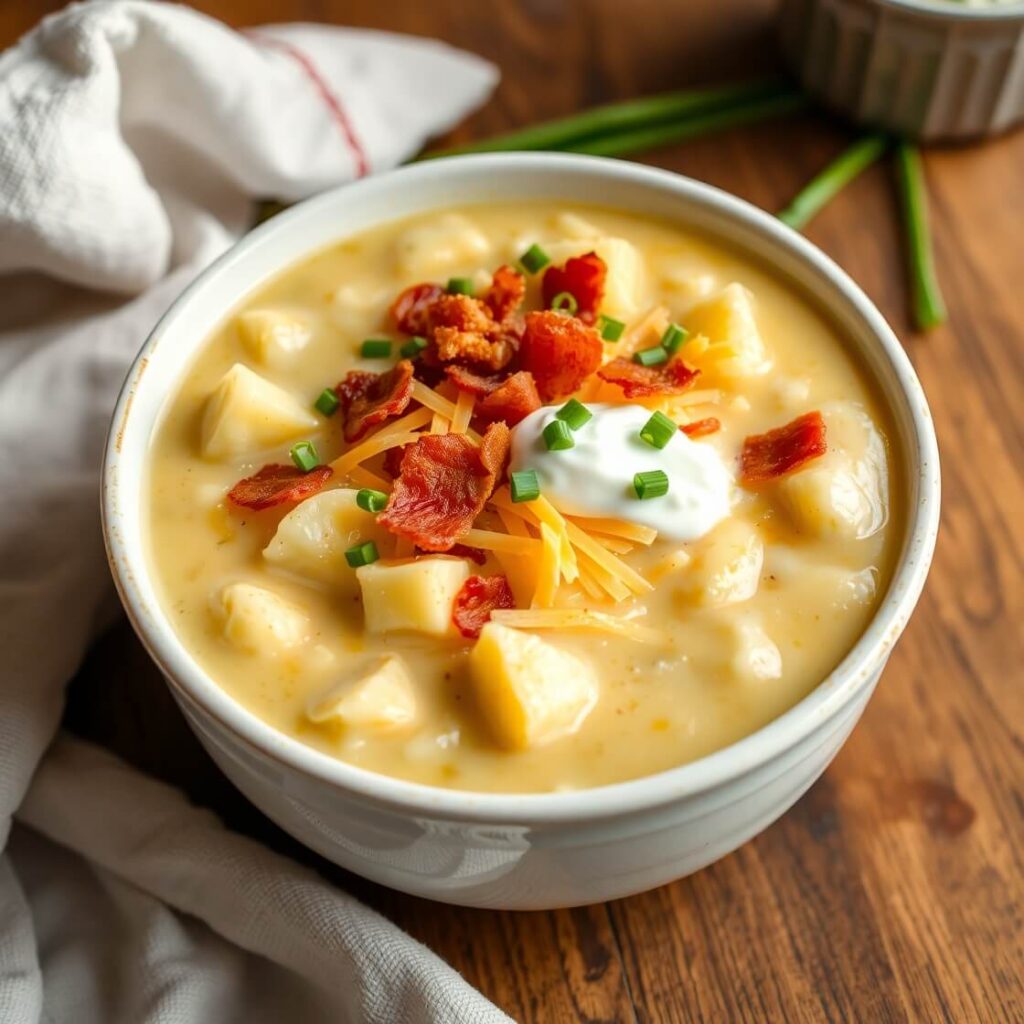
This soup reheats surprisingly well, but there are a couple of tricks to keep it from turning gluey or overly thick.
- Fridge: Let it cool fully, then store in an airtight container for up to 4 days. Reheat gently on the stove with a splash of milk or broth to loosen it back up.
- Freezer: Potato soup is trickier to freeze because potatoes can get grainy, but I’ve had success freezing it before adding the dairy. Just stop before stirring in the sour cream and cheese, then freeze in portions. Reheat, and add the dairy fresh before serving.
- Make-Ahead Tip: I often cook the bacon and chop the veggies the night before. That way, dinner the next evening is just a matter of simmering.
Swaps and Tweaks
Every family has their version of potato soup, and I’ve tested enough variations to know there’s no wrong way to do it.
For Vegetarians: Skip the bacon and start with a knob of butter or olive oil. Add smoked paprika for that missing smoky note, or even a dash of liquid smoke.
For Gluten-Free: Replace the flour with cornstarch slurry (mix cornstarch with a little cold milk before whisking in). You’ll get the same creamy texture without the gluten.
For a Lighter Bowl: Use low-fat milk and Greek yogurt instead of sour cream. The flavor is still great, but the soup feels less heavy.
For Extra Indulgence: Swap half the milk for heavy cream. This makes the soup restaurant-level rich and silky.
Kid-Friendly Twist: My kids used to pick around the green onions, so sometimes I blend part of the soup smooth before serving. It makes the base extra creamy and hides the onions in plain sight.
Bringing It to the Table
One of the reasons I keep this soup in my rotation is how well it adapts to different occasions.
For a cozy family dinner, I serve it with nothing more than a loaf of crusty sourdough and maybe a simple green salad. The bread soaks up the creamy broth perfectly, and the salad balances the richness.
If I’m hosting friends, I lean into the “loaded” theme. I set up a topping bar with extra shredded cheese, sour cream, bacon crumbles, chives, and even a few wildcards like hot sauce or roasted broccoli. People love customizing their bowls, and it makes dinner interactive without me fussing in the kitchen.
For weeknight leftovers, I’ve even spooned this soup over roasted vegetables or reheated it alongside a grilled chicken breast. It’s surprisingly versatile—more than just a starter, it becomes the meal itself.
Cook’s Notes and Little Lessons Learned
This soup has taught me more than once that small details make a big difference.
- The bacon lesson: The first time, I drained all the bacon grease, thinking it would be “healthier.” Big mistake. The soup lost its smoky backbone. You don’t need all the fat, but a spoonful or two makes the flavor.
- The roux moment: If you rush this step, the soup will taste faintly chalky. Let the flour cook a bit until it smells nutty before adding liquid. That smell tells you it’s ready.
- The potato texture trap: Dice them evenly. If some are tiny and others huge, you’ll end up with mushy bits swimming with undercooked chunks. I aim for ½-inch cubes.
- The seasoning curveball: Potatoes soak up salt. Always taste before serving, and don’t be afraid to add another pinch—it often needs it.
After a few batches of trial and error, I realized this recipe isn’t about being “perfect.” It’s about those quiet sensory cues—the sound of bacon sizzling, the nutty smell of flour, the way the soup thickens just as the potatoes give in.
Print
Loaded Baked Potato Soup
- Total Time: 45 minutes
- Yield: 6 1x
- Diet: Vegetarian
Description
A rich and creamy soup that captures all the classic baked potato flavors in every comforting spoonful. Tender chunks of russet potatoes simmered in a flavorful broth thickened with a buttery roux create the perfect base. Melted sharp cheddar cheese, smoky bacon, tangy sour cream, and fresh chives come together to create a satisfying, hearty meal ideal for chilly nights or anytime you want cozy comfort food. Easy to prepare, versatile, and perfect for sharing with family and friends.
Ingredients
- 4 large russet potatoes, peeled and diced
- 6 slices bacon
- 1 medium onion, diced
- 2 cloves garlic, minced
- 4 cups chicken or vegetable broth
- 3 tablespoons unsalted butter
- 3 tablespoons all-purpose flour (or cornstarch for gluten-free)
- 1 cup milk
- 1 cup heavy cream
- 2 cups shredded sharp cheddar cheese
- Salt and freshly ground black pepper, to taste
- 1/4 teaspoon cayenne pepper or smoked paprika (optional)
- 1/2 cup sour cream, plus more for garnish
- 2 tablespoons fresh chives, chopped
Instructions
- Cook bacon in a skillet until crispy. Remove and crumble, reserve some for garnish.
- In the same pot, melt butter over medium heat. Sauté onion until translucent, add garlic and cook 1 minute.
- Stir in flour and cook 2-3 minutes to form a roux.
- Slowly whisk in broth, ensuring no lumps form. Add diced potatoes and bring to a boil.
- Reduce heat and simmer until potatoes are tender, about 15-20 minutes.
- Partially mash potatoes with a masher or immersion blender, leaving some chunks.
- Stir in milk, cream, and cheese until melted. Season with salt, pepper, and optional cayenne.
- Remove from heat, stir in half the bacon and chopped chives.
- Serve topped with sour cream, remaining bacon, cheese, and chives.
Notes
- For gluten-free, replace flour with cornstarch.
- Adjust thickness by adding more broth or milk.
- Roast potatoes beforehand for a deeper flavor.
- Garnishes are essential for authentic loaded baked potato taste.
- Prep Time: 15 minutes
- Cook Time: 30 minutes
- Category: Soup
- Method: Stovetop
- Cuisine: American
Nutrition
- Serving Size: 6
- Calories: 420
- Sugar: 3g
- Sodium: 720mg
- Fat: 27g
- Saturated Fat: 15g
- Unsaturated Fat: 9g
- Trans Fat: 0g
- Carbohydrates: 30g
- Fiber: 4g
- Protein: 14g
- Cholesterol: 70mg

